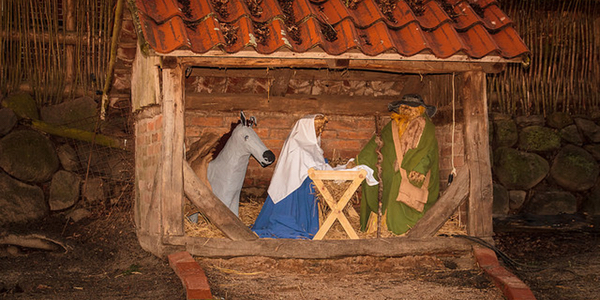Christmas is coming.
Here in the U.S. the stores are already in full Christmas regalia and carols are blaring throughout the malls. At church, we are getting ready for our pageants and our Christmas parties. The nativity scenes are being assembled, and our images of Jesus and his family alone and abandoned in a dirty stable are forming.
Jesus Family at Christmas
But is that the way it really was?
According to New Testament theologian Kenneth Bailey in his wonderful book Jesus Through Middle Eastern Eyes, Middle Eastern cultures are known for their hospitality. Joseph was coming home with a new wife and an expected first child. The whole family was gathering, aunts and uncles, cousins and brothers and sisters. All of them coming home.
Yes, there was a census that brought them together. But in this fun-loving culture, it would not have diminished the welcome or the excitement of a homecoming gathering. The expectation of a newborn baby in their midst would only have increased the excitement.
As Kenneth Bailey explains, the Greek word (katalyma or kataluma) translated as inn in Luke 2:7 does not mean a commercial building with rooms for travelers. It’s a guest space, typically the upper room of a common village home.
“A simple village home in the time of King David, up until the Second World War, in the Holy Land, had two rooms—one for guests, one for the family. The family room had an area, usually about four feet lower, for the family donkey, the family cow, and two or three sheep. They are brought in last thing at night and taken out and tied up in the courtyard first thing in the morning.
“Out of the stone floor of the living room, close to family animals, you dig mangers or make a small one out of wood for sheep. Jesus is clearly welcomed into a family home.” (54)
It was to this simple village home that the shepherds and wise men came. Shepherds despised and regarded as unclean by their society, are visited by angels and invited to join the great homecoming celebration that marks the coming of the child who will become the Messiah. For them to be invited into a family home is far more remarkable than an invitation to a stable. This is good news indeed for the outcast and the despised.
Then the wise men come, according to Bailey, rich men on camels, probably from Arabia. And they come not to the city of Jerusalem where the Jews thought God’s glory would shine, but to the child born in a manager around whom there is already a great light. The wise men come to find a new home, a new place of belonging that has beckoned to them across the world. This too is remarkable and good news for people of all nations who long for a place to call home.
Little Saints
In our new MSA resource A Journey Toward Home: Soul Travel for Advent to Lent, one of the reflections in it is on the French custom of santons:
“Santons are, literally, “little saints.” Part of a typical French Nöel crèche, santons come in work clothes to visit the Holy Family. They bring the Christ Child presents they have made or grown, hunted or sold. They perform or offer simple gestures of thoughtfulness…..
The shepherds summon all Provençal villagers. They bring their unique gifts to honor the newborn child: the baker (or his son) with typical Provençal breads like la banette and le pain Calendal (a round country loaf marked with a cross and baked only at Christmastime), the vegetable merchant, the cheese vendor, the basket maker, the wine grower, the humble woman or man who brings only a bundle of sticks for a fire to keep the baby warm.”
A poor old man, who thinks he has nothing to give the Baby, holds his lantern and offers to light the way for others. His gift of thoughtfulness and courtesy earns him a place in the scene.
This year I plan to create an Advent Manger wreath with images of people I would like to gather with around the manger – friends and families, refugees and homeless people I have worked with, strangers whose needs make my heart ache. I invite you to join me.
I wonder who do we welcome to the manger? Do we make room for the excluded and the ignored – the prostitutes, the drug traffickers, the illegal immigrants, the disabled and the socially unacceptable – at the manger?
When I posted this invitation, people responded with ideas of where and how they could gather with friends and strangers around the manger in church, in homeless shelters, in refugee camps, on the borders that keep out the unwanted. This is my personal focus for the season, and I invite you to join me.
How will you extend an invitation through your church or faith community so that everyone feels welcome?
“Let’s Plant a V3 Church in my Neighborhood”
Share on Facebook
Tweet This
Share this Post

